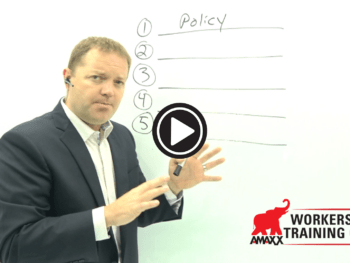Recently, the United States Congress voted to pass and President Obama signed into law the largest stimulus plan in U.S. history: $787 billion. There is little debate action on the part of the U.S. Government was required. But what if Congress and the President had decided NOT to take action? Unfortunately, we are not able to compare the results from an action taken to an action not taken.
We face a similar argument when trying to assess and quantify the recommended actions employers should follow in order to reduce the cost of their workers’ compensation programs, particularly the loss costs. Dozens upon dozens of articles are written and many recommendations are offered from case management to the establishment and use of transitional duty. Arguments are made to reinforce positions that affirmative, proactive effort by employers will reduce costs.
Understandably, most business owners want to know the rate of return on capital they are asked to invest. That is, if the employer follows these recommendations, how much less will his workers’ compensation costs be? The most accurate measurement is to compare the failure to act to action taken.
Thus, we are faced with the dilemma of trying to prove a negative.
Why should employers invest time, effort and money to mitigate workers’ (workersxzcompxzkit) compensations costs? Failure to make such an investment is analogous to finance companies and banks making loans to unqualified borrowers. Eventually, the bubble bursts and the amount of capital to support a workers’ compensation program with runaway loss costs deteriorates profit margins and eradicates earnings.
Employers, encouraged by the risk management community must work together to prevent a crisis from occurring that adversely affects employees, stakeholders and stockholders. Following the preventive steps prescribed by their advisors, employers should take note of the lessons from this financial crisis and judiciously invest the required capital to provide a safe work environment for their employees, prompt medical care for injured employees, fair resolution of claims for benefits and to the extent possible, develop transitional job responsibilities to bring injured workers back into the workforce.
If a cost comparison is necessary, effort should be guided to measure the amount of capital for prevention compared to the capital required to respond post-crisis.
Author: Michael Ferreira is the President of Safegate Risk Consulting, LLC. He has been in the insurance industry for many years and has expertise in brokerage, underwriting and claims. While in the brokerage industry, he was the client account executive for Walmart. He can be reached at: 917-767-9123.
Try some of our cool tools below to help you prove a negative:
WC Calculator www.ReduceYourWorkersComp.com/calculator.php to prove cost of NOT having accidents.
Use the transitional duty calculator to show cost savings in NOT losing time from work:
TD Calculator www.ReduceYourWorkersComp.com/transitional-duty-cost-calculator.php
Do not use this information without independent verification. All state laws are different. Consult with your corporate legal counsel before implementing any cost containment programs.
©2008 Amaxx Risk Solutions, Inc. All rights reserved under International Copyright Law. If you would like permission to reprint this material, contact Info@WorkersCompKit.com








